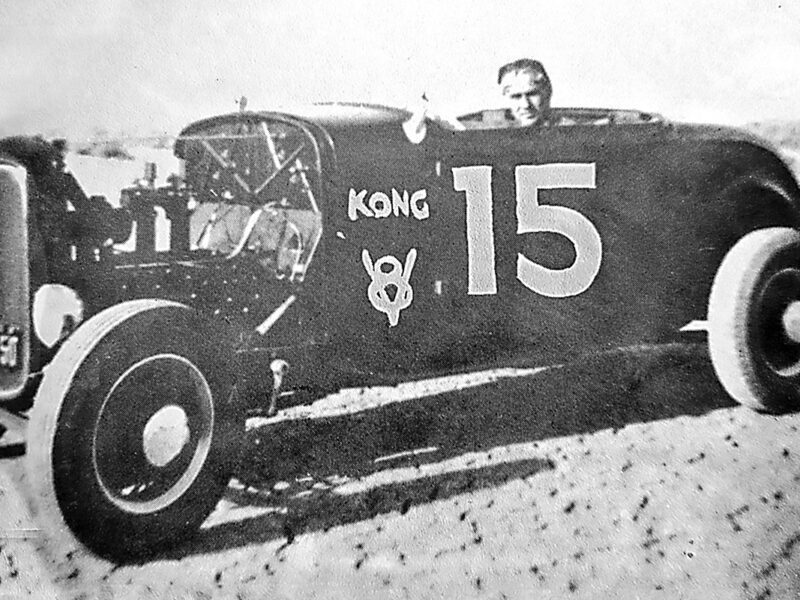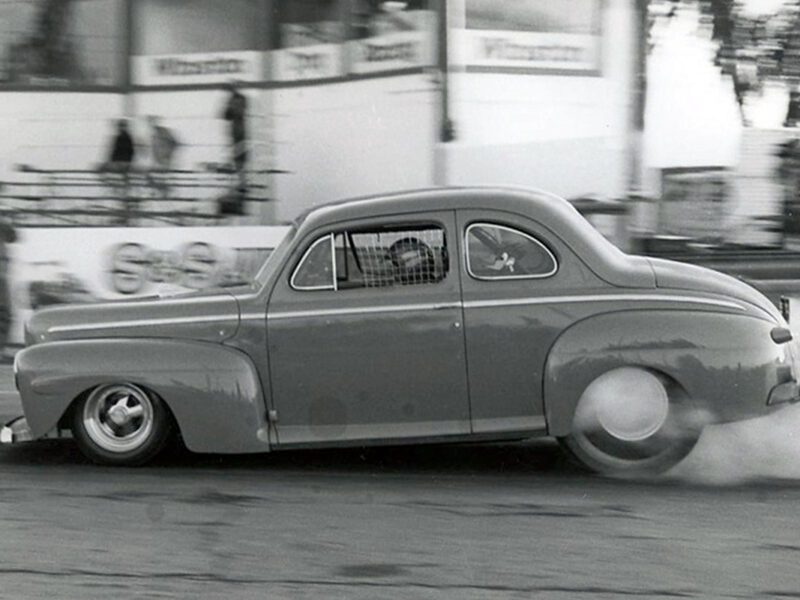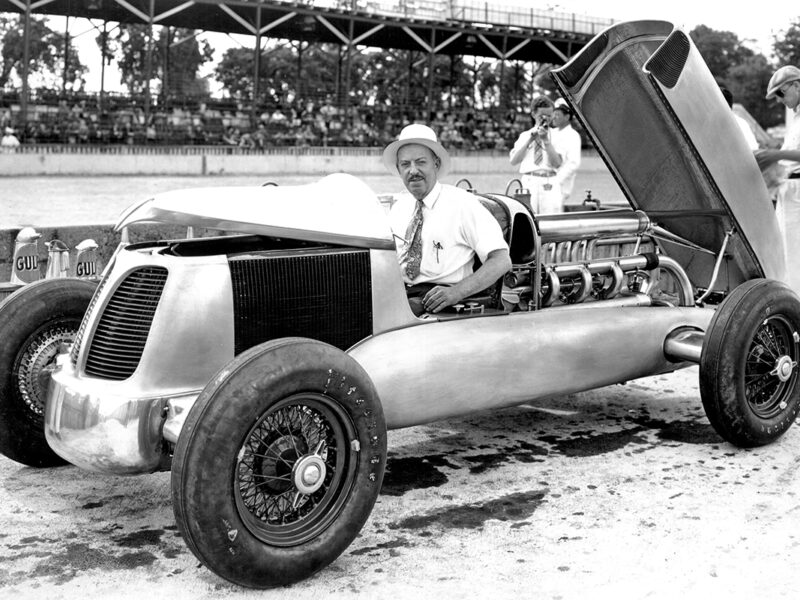The Pierson Brothers’ Coupe – Sliced Straight-Line Speedster
In the quest for speed, aerodynamics has proven just as important as horsepower. The machines that hurdled across the dusty dry lakes of SoCal and the salty flats of Bonneville caught on early that reducing aero drag resulted in a boost in top speed.
While the shape of modern racers is honed in wind tunnels and computer simulators, those early postwar designers relied on a more seat-of-the-pants approach, often taking cues from the shape of aircraft. Hence, the popular “belly tank” lakesters. But making Model Ts and Ford roadsters and coupes aerodynamically slippery is a different matter, not unlike pushing a cardboard box though a wall of wind.
Enter the tale of the 1934 Ford three-window coupe purchased in the late 1940s by Dick and Bob Pierson of Inglewood, California. Dick needed wheels to get to school, and when he spotted a beater for $25, well, he couldn’t say no.
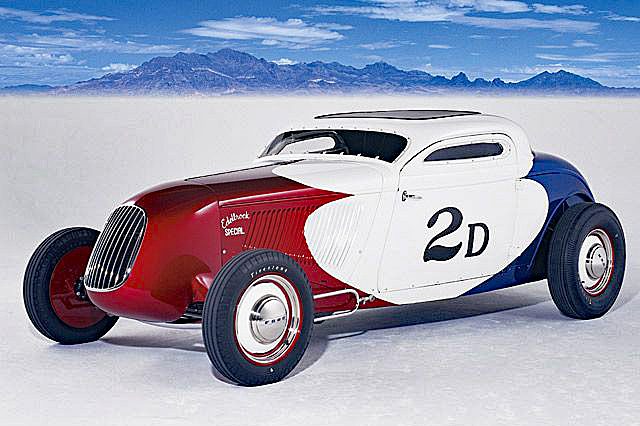 His parents did say no. No to any hot rodding, that is. (Sure, mom, whatever you say.) Soon the ramshackle hulk was at the shop of famed hot rodder Bobby Meeks. Meeks began the process of bringing the car up to safe everyday driver status. But he also happened to work for Vic Edelbrock, who was always scouting for youngsters with a hunger for hot cars. Bob and Dick Pierson were just such youngsters. Once Meeks tipped off Edelbrock to the Pierson brothers’ interest in racing, the project’s focus dramatically changed.
His parents did say no. No to any hot rodding, that is. (Sure, mom, whatever you say.) Soon the ramshackle hulk was at the shop of famed hot rodder Bobby Meeks. Meeks began the process of bringing the car up to safe everyday driver status. But he also happened to work for Vic Edelbrock, who was always scouting for youngsters with a hunger for hot cars. Bob and Dick Pierson were just such youngsters. Once Meeks tipped off Edelbrock to the Pierson brothers’ interest in racing, the project’s focus dramatically changed.
The simple driver would be transformed by Meeks and others into one of the most celebrated hot rods of all time, thanks to its radically altered silhouette aimed at maximizing straight-line speed. Its iconic profile included a 9-inch top chop, 3-inch channel, fender removal, and a midget race car nose.
The master touch, though, was the windshield. The Russetta Timing Association rulebook specified a minimum 7-inch height – but there was no limitation on its angle. So, Meeks fired up his acetylene torch and laid the posts back a dramatic 50-degrees. The Pierson Brothers’ ’34 became the first coupe with such radically slanted windshield posts.
Additional welding and fabrication was then handled at T&T Engineering in Gardena. Meeks massaged the engine at Edelbrock’s shop, a bored-and-stroked 267c.i. Merc Flathead with three Strombergs perched atop an Edelbrock intake. The chassis featured a tube front axle, ’39 Ford cross-steering, and Halibrand quick-change with 2.94 gears. Tires were ribbed Firestones wrapped around Ford wheels adorned with ’48 Ford beauty rings and hubcaps.
Interior accoutrements included Stewart Warner gauges, upholstery-free bucket seats, seat belts, roll bar, and a D-shaped steering wheel to improve visibility through that sliver of a windshield.
The car debuted at El Mirage and it was quick off the trailer, soon setting a Russetta Timing Association record of 142mph. And remember, being a coupe, it was limited to Russetta competition, as coupes were not yet deemed legal by the SCTA. “We didn’t think coupes were real hot rods,” then SCTA Board Member Alex Xydias said recently. “We were very conservative guys and these cars didn’t fit our pattern. At first, we didn’t even believe the speeds the Pierson brothers’ coupe was making!”
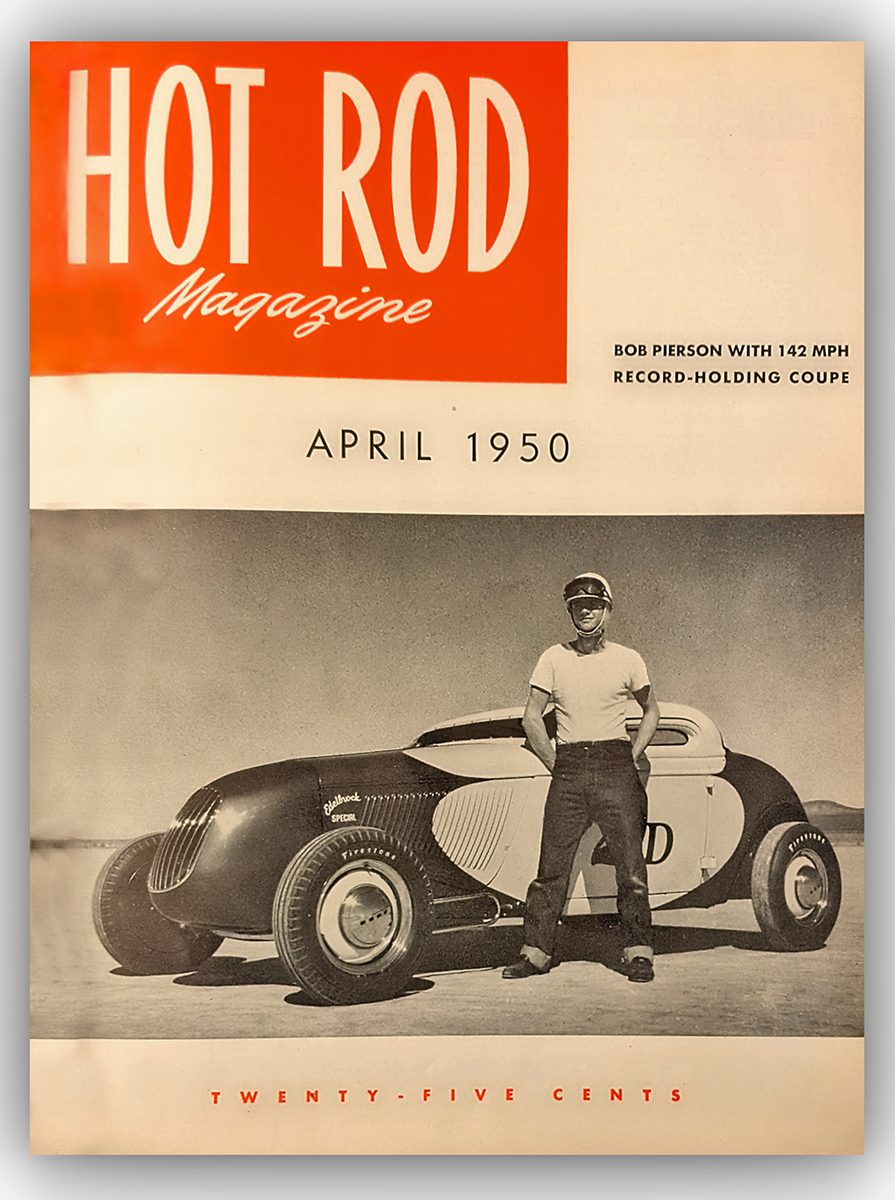 Immediately, the Pierson coupe caught the eye of Hot Rod magazine, which spotlighted the car on its April 1950 cover. (Photo by Tom Medley. Sorry, I’m genetically compelled to mention that!)
Immediately, the Pierson coupe caught the eye of Hot Rod magazine, which spotlighted the car on its April 1950 cover. (Photo by Tom Medley. Sorry, I’m genetically compelled to mention that!)
So began a multi-decade tour through the dry lakes and Bonneville record books. By 1951, the Piersons had pushed the car to 153mph at El Mirage and also topped the time charts in the new SCTA coupe class.
In 1952, the Pierson brothers sold the car to Dawson Hadley and Jim Evans, who continued to race the car, including at Bonneville in 1952 and 1953, with a best of 165.23mph. More owners followed, who kept going faster and faster, with a range of powerplants and speed upgrades.
Eventually the years took their toll and in 1980 Tom Bryant purchased the coupe in a woebegone state, unaware of its history. Bryant brought it back to life and campaigned it for nearly two decades, rewriting the record book along the way: D/FCC class record at Bonneville for the fastest average speed of 221.898mph; fastest one-way speed of 224.679mph; and an you’re-kidding-me exit speed of 227mph set in 1991.
In 1992, car collector and hot-rodder supreme Bruce Meyer purchased the car and had it restored to its original 1950 condition, a project overseen by the late Pete Chapouris and the reborn So-Cal Speed Shop. Since the restoration, the Pierson Brothers’ coupe has been a showstopper everywhere it goes, from appearances at the Petersen Automotive Museum, to Pebble Beach and the Goodwood Festival of Speed in England.
Legends die hard, they say. And the Pierson Brothers’ Coupe is one legend that will indeed live on.
Photos courtesy Eric Geisert



